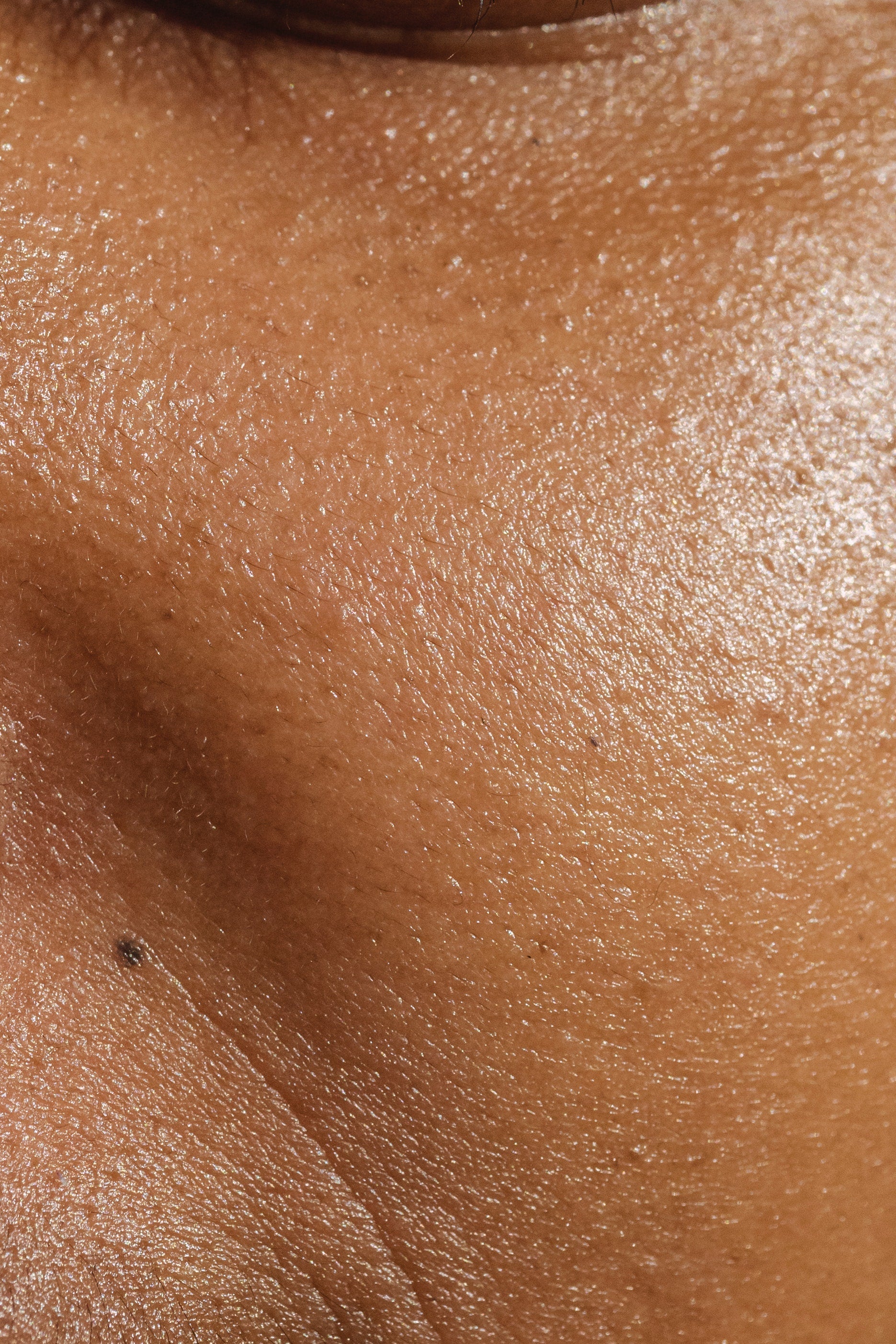Growth Factors in Skin Care Products: Are They Beneficial?
Dermamedics gets many calls from medical office staff who want to know what “growth factors” are and what they do for the skin that is beneficial. There are many skin care products on the market today that contain growth factors, and the sales representatives who market these products may talk about their numerous anti-aging effects. Unfortunately most of us don’t really know much about growth factors and, thus, cannot critically evaluate the claims made by the companies that sell products containing them.
What are Growth Factors and What Do They Do?
Growth factors are proteins that are produced by a variety of cells in the body, including fibroblasts and keratinocytes in the skin, and in immune cells. They act somewhat like “hormones” in that they bind to receptors on target cells and by doing so alter the functions of cells they interact with. There are many different growth factors produced in the body and some, like Fibroblast Growth Factor, consist of a family of over 20 variants. Other proteins, called “cytokines”, like IL-1, are often incorrectly referred to as “growth factors”. They are not growth factors. Cytokines (and “chemokines”) primarily regulate immune cell functioning and control inflammatory responses.
Growth factors vary in size from 6,450 Daltons (Epidermal Growth Factor) to over 34,000 Daltons (Fibroblast Growth Factor). Other commonly known growth factors include: Platelet Derived Growth Factor (PDGF), Hepatocyte Growth Factor (HGF), Insulin-like Growth Factor (IGF-1, Transforming Growth Factor (TGF), and Vascular Endothelial Growth Factor (VEGF). The main function of growth factors, as their name implies, is to stimulate growth and proliferation (mitogenesis) of the cells that they interact with. Growth factors can stimulate the growth of not only skin cells, but also of blood vessel cells (FGF and VEGF) thereby creating new blood vessels (a process called angiogenesis). They can also change the activity of genes in ALL cells they interact with, thereby changing the functioning of these cells. For example, the growth factor, TGF can activate the gene for collagen-1 in fibroblasts, which leads to an increased production of this protein in fibroblasts. Although stimulating collagen production may sound like a great skin benefit, this effect is actually a “double-edged sword” since many scientific reports show that excessive scarring is the result of an over-production of TGF, which causes an over-growth of collagen at the wound site, producing a scar. Growth factors can also block the activity of certain protective genes whose functions are to “trigger” the death (called “apoptosis”) of damaged and abnormal cells before they can transform into cancer cells. Apoptosis is an important natural process in the body (and skin) for getting rid of aged, damaged and abnormally transformed (cancer) cells. Unfortunately growth factors can block this death process. While beneficial for cell proliferation, preventing cell death also allows potentially cancerous cells to survive.
Since growth factors stimulate proliferation in the cells they interact with, years of scientific studies have been carried out to investigate the role of growth factors in cancer. Literally hundreds of publications have reported that growth factors actually accelerate the growth rate of cancer cells, including squamous cell skin cancer and melanoma. Further, many cancers actually require growth factors and growth factor receptors to survive and grow. The Epidermal Growth Factor receptor, for example is linked to various types of cancer, including squamous cell skin cancer, melanoma, head and neck cancer and breast cancer, and chemotherapeutic drugs have now been developed to block the activation of the EGFR receptor.
As you can see, growth factors have both beneficial as well as potentially detrimental effects on human cells, and their prolonged use should be approached with caution.
Evaluating the Value of Growth Factors in Skin Care Products
There are 3 important criteria that need to be considered when evaluating the value of a skin care product that contains growth factors.
- How stable are the growth factors when they are incorporated into the skin care product?
- Can the growth factors even enter the skin and reach aging cells in the dermis where they must go if they are to provide any benefits?
- Are there any potential health risks associated with the long-term use of skin care products containing growth factors?
Growth Factors are Very Unstable and Degrade Easily
Growth factors are extremely unstable at room temperatures and are not even very stable at refrigeration temperatures. Many peer-reviewed scientific publications have studied the stability of different growth factors in various liquid solutions and at different temperatures. Some findings that have been published in scientific journals are shown below:
- EGF stability: 50% of EGF (Epidermal Growth Factor) is degraded in less than 7 hours at room temperature (Yang et al. 2004. Process Biochemistry 40:1661.
- KGF (Keratinocyte Growth Factor, aka FGF-7) is also unstable at room temperature and shows a 50% loss in less than 24 hours.
- All of the FGF family of 22 different molecules are very unstable. At body temperature FGF proteins “unfold” and in 6 hours become biologically inactive. Hsu, E et al (2006) Protein Eng. Des.Sel. 19: 147.
- Hepatocyte Growth Factor degrades by 40% in just 3 hours
- IGF-1 is only stable at room temperature for 24 hours (Elmlinger, MW et al (2005) Clin.Lab 51:145.
There are many more studies regarding growth factor stability, but the simple fact is that they are not stable when dissolved in water, which, of course, is a major component of any skin care cream or lotion. On average, the biological activity of any growth factor in water decreases by over 75% in just 24 hours at room temperature. In two days, the biological activity is essentially all gone. In fact, when scientists purchase purified growth factors from biochemical supply companies for research studies, the growth factors are shipped as a freeze-dried pellet (no water) and are shipped on dry ice. The instructions from the manufacturer typically state that when the growth factors are re-suspended in water or other medium, they will be stable for only 7 days and this is ONLY if they are stored in a refrigerator (below 39 degrees F).
Some companies that sell skin care products containing growth factors claim that the growth factors in their products are stable, but unless the growth factor is somehow “sequestered” away from the water in these products (for example, placed inside a liposome or nanosome), it is extremely unlikely that they can retain their biological activity for even a day after manufacture. Companies that produce data showing that growth factors are still present in a skin care product months after production, are likely not measuring the “biological activity” of the growth factor (which tells you that the growth factor is still “active” and can work on target cells in the skin) but, rather, are just using an antibody that detects the presence of the growth factor protein, which may or may not be degraded and therefore inactive.
So when thinking about the skin care lotion or cream sitting on a store shelf that has been manufactured somewhere across the country weeks or months before, and which has been shipped in a non-refrigerated truck for several days before reaching your office, what is the likelihood that the product has any ‘biologically active’ growth factor in it? Before purchasing any product containing growth factor, it is important that the sales or customer service representative that is selling the product show you science data that proves that the growth factors in their products are still BIOLOGICALLY ACTIVE. Data that simply shows that the growth factor protein is still present in the product is useless because it doesn’t tell you whether or not the growth factor is still biologically “active”. It may still be there in the product in a degraded and useless form.
Growth Factors are Too Big to Penetrate the Skin's Barrier (the Stratum Corneum)
As mentioned above, growth factors are proteins that range in size from a molecular weight of 6500 Daltons to over 30,000 Daltons. What is a Dalton? Simply put, it’s an extremely small measure of the size (mass) of a molecule, chemical compounds and proteins. To provide a crude example of sizes measure in Daltons, consider that a grain of salt is 50,000 times larger than a typical protein.
But even though proteins are small, the important question one should always ask when considering purchasing a skin care product that contains growth factors is: can the growth factors in the product actually penetrate through the skin’s surface to reach living cells below? As it turns out, there is a wealth of scientific data one can turn to in order to answer this question. There is a well-known “rule” in cosmetic chemistry (Bos, JD and Meinardi, MM The 500 Dalton Rule for the Skin Penetration of Chemical Compounds and Drugs,(2000) Exp.Dermatol 9:165) that states that:
"only molecules equal to or smaller in size than 500 Daltons can penetrate through the very impermeable top layer of the skin, called the stratum corneum."
The stratum corneum (often called the “barrier layer” ) is designed to prevent anything from getting into the skin (for example, bacteria which can cause infection) and it prevents water from being lost from the skin. The stratum corneum can be thought of as resembling bricks and mortar. The only significant pathway for molecules to enter the skin is through the “mortar” between the cornified cells of the stratum corneum and even to do this the molecules must be very small (<500 Daltons). And, in addition, because the “mortar” is lipid (oil-like), for any molecule to move through this “mortar” it needs to be fairly oil soluble (or have no charge). While in theory, molecules larger than 500 Daltons could enter the skin through the hair follicle openings or through sweat glands, when one considers that both of these structures combined account for less than 1% of the entire skin’s surface, 99% of the skin would never be exposed to a molecule entering through the follicle.
So where does this leave growth factors? Unfortunately, growth factors are:
- too big to move into the stratum corneum to get down into the skin (remember: the smallest growth factor is over 6000 Daltons, and most are over 15,000 Daltons, which is 10-15 times too large to move into the skin)
- they are water soluble and therefore can’t penetrate through the lipid “mortar” of the stratum corneum.
- And, as mentioned, they are very unstable
While companies that sell skin care products containing growth factors may suggest that growth factors might move into the hair follicles and then somehow “communicate” with cells adjacent to the follicle to exert their effects, there is no published data to support this. Further, as mentioned, since less than 1% of the skin has follicles, it seems unlikely that growth factors could exert much of any kind of a biological effect by using this route into the skin. When one thinks about ingredients that have been scientifically shown to exert a measurable biological effect on skin when applied topically, ALL of these compounds are smaller than 500 Daltons. Examples of small chemicals and drugs that can penetrate through the stratum corneum and regulate skin functions are: 1) corticosteroids, 2) retin-A, 3) retinol, 4) ascorbyl palmitate, and, of course 3) Therosol® (4-propyl guaiacol – 156 Daltons).
Are There Any Medical Treatments That Can Deliver Growth Factors Into The Skin?
Although growth factors are not very stable and are too big to penetrate through the intact stratum corneum , there are medical procedures available that can “bypass” the stratum corneum to allow active growth factors to enter the skin. Older procedures, like dermabrasion, peeled away the stratum corneum, causing consider pain. Newer procedures either involve injecting growth factors into the skin or creating “holes” in the stratum corneum in order to disrupt its barrier function. Procedures such as microneedling can create the temporary “holes” needed to allow growth factors to penetrate. However, the growth factors injected or applied after micro-needling obviously need to be biologically active to be effective. Because growth factors are not stable for more than a few hours at room or body temperature, in order for these procedures to work, the growth factors either need to come from the patient’s own blood and applied to the skin immediately, or they should come from frozen vials that are thawed and used right away. By using these procedures biologically active growth factors can enter the skin.
Are There Any Health Risks from Using Skin Care Products Containing Growth Factors
As discussed above, the body produces a wide variety of growth factors throughout life, and these all play important roles in growth and development of tissues and organs. In skin, growth factors play a very important role in wound healing and in maintaining normal skin function. But in the body, growth factors are produced in “spurts”; that is, they are made quickly to produce a specific effect, like stimulating the growth of fibroblasts to close a wound, and they degrade (disappear) very quickly. So what can happen to normal cell functioning if growth factors are continually produced and exert their effects on cells for long periods of time instead of being produced in spurts? As discussed above, a considerable amount of research has been carried out to look at the role of growth factors in cancer cell growth. These studies have shown the growth rates of many types of cancer cells, including basal and squamous cell cancer and melanoma, are stimulated by growth factors. Because of the strong link between growth factors, growth factor receptors and cancer cell growth, there are now many prescription cancer drugs on the market that are designed to inhibit growth factors and their receptors. Examples of cancer drugs that target and inhibit the activation of the Epidermal Growth Factor receptor are Gefitinib, Erlotinib, Afatinib,, Brigatinib, Gefitinib, and Tarceva.
Although growth factors are clearly linked to cancer cell growth, is there any real danger in using a skin care product that contains them. The best answer is that it is extremely unlikely that growth factors in skin care products pose any cancer risk for two simple reasons: 1) the growth factors in these products have very likely lost most, or all, of their biologic activity by the time they show up on a shelf for sale, and 2) they are too big to penetrate into the skin and therefore, won’t have any effect on living cells in either the epidermis or dermis. In short growth factors in topical products will have no effect on skin cells, either positively or negatively.
So, in conclusion, while growth factors play an important role in normal skin functioning, their rapid degradation and inability to penetrate through the skin’s barrier, suggests that their effectiveness, when formulated into skin care lotions and creams, will be negligible.






